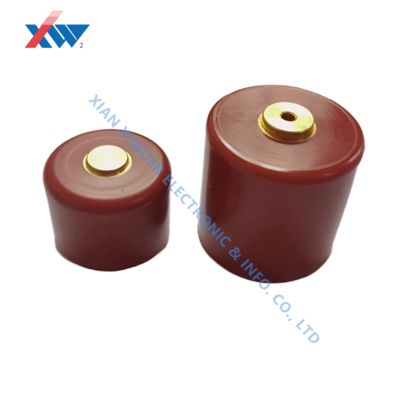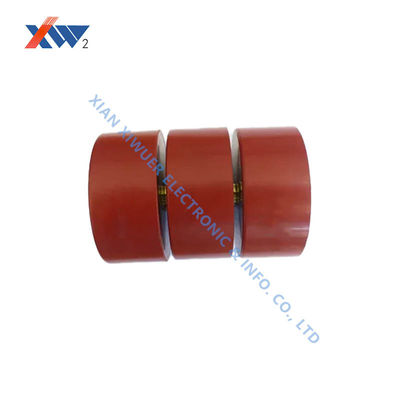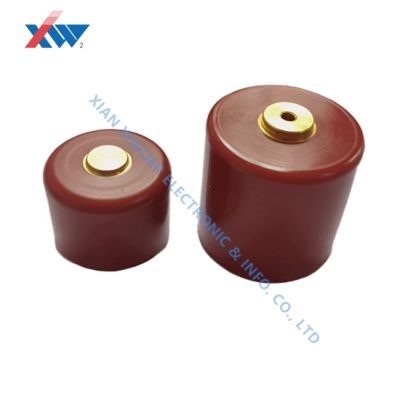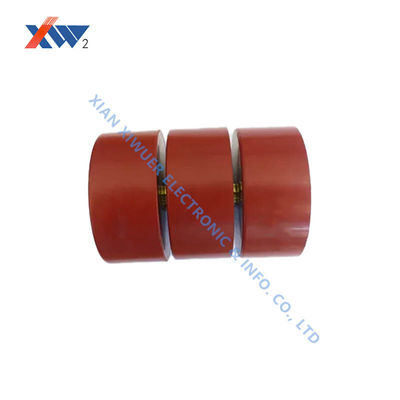-
Condensador de cerámica de alto voltaje
-
Condensadores de alto voltaje del tirador
-
Condensador de alto voltaje de la película
-
Live Line Capacitors
-
Dispositivo protector de la oleada
-
Disyuntor de alto voltaje del vacío
-
Sensor de temperatura del dispositivo de distribución
-
Transformadores de instrumento del voltaje
-
Detector capacitivo del voltaje
-
Divisor de voltaje capacitivo
-
Aislador capacitivo
-
varistor de los movimientos
-
Termistor del PTC NTC
-
Resistores de alto voltaje
-
 Richard“XIWUER es muy innovador. Han proporcionado el servicio excelente, intuitivo, anticipando en el futuro en cuanto a lo que puede ser que necesitemos.”
Richard“XIWUER es muy innovador. Han proporcionado el servicio excelente, intuitivo, anticipando en el futuro en cuanto a lo que puede ser que necesitemos.” -
 MikeEl “esmero de XIWUER a diseñar diversas especificaciones para cumplir nuestros requisitos de proceso rigurosos es un testamento a nuestros años de investigación y desarrollo.”
MikeEl “esmero de XIWUER a diseñar diversas especificaciones para cumplir nuestros requisitos de proceso rigurosos es un testamento a nuestros años de investigación y desarrollo.” -
 Cásese“XIWUER tiene capacidades impresionantes de la investigación y demuestra buenas capacidades de la creación de un prototipo y alta calidad del producto.”
Cásese“XIWUER tiene capacidades impresionantes de la investigación y demuestra buenas capacidades de la creación de un prototipo y alta calidad del producto.”
Una Revolución en Materiales Dieléctricos: La Evolución de los Condensadores de Alto Voltaje desde el Aislamiento Básico hasta la Respuesta Inteligente

Éntreme en contacto con gratis las muestras y los vales.
whatsapp:0086 18588475571
wechat: 0086 18588475571
Skype: sales10@aixton.com
Si usted tiene alguna preocupación, proporcionamos ayuda en línea de 24 horas.
x| Dissipación | - ¿Qué quieres decir?0040 | Voltaje que soporta | 1.5ur ● 1min |
|---|---|---|---|
| voltaje Resistencia de aislamiento | ≧ 1.0 × 105mΩ | ||
| Resaltar | Capacitores de puertas de alta tensión,condensadores de aislamiento dieléctrico,condensadores de respuesta inteligente |
||
Una revolución en los materiales dieléctricos: la evolución de los condensadores de alta tensión desde el aislamiento básico hasta la respuesta inteligente
Dibujo:![]()
Parámetros:
| Nº | Especificación | Disipación | Tensión de resistencia | Resistencia de aislamiento | Dimensión (mm) | ||||
| 1 | 20kV-2000pF |
≦0.0040 |
1.5Ur● 1min |
≧1.0×105MΩ |
D | H | L | D | M |
| 2 | 20kV-10000pF | 45 | 19 | 23 | 12 | 5 | |||
| 3 | 20kV-18000pF | 65 | 15 | 19 | 12 | 5 | |||
| 4 | 30kV-1000pF | 80 | 17 | 25 | 12 | 5 | |||
| 5 | 30kV-2700pF | 45 | 24 | 32 | 12 | 4 | |||
| 6 | 30kV-12000pF | 60 | 20 | 28 | 12 | 4 | |||
| 7 | 40kV-150pF | 20 | 33 | 41 | 8 | 4 | |||
| 8 | 40kV-500pF | 28 | 33 | 41 | 8 | 4 | |||
| 9 | 40kV-7500pF | 80 | 24 | 29 | 12 | 6 | |||
| 10 | 40kV-10000pF | 80 | 22 | 26 | 16 | 5 | |||
| 11 | 50kV-1000pF | 50 | 30 | 34 | 12 | 4 | |||
| 12 | 50kV-1000pF | 32 | 27 | 31 | 16 | 5 | |||
| 13 | 50kV-5600pF | 80 | 31 | 35 | 16 | 5 | |||
| 14 | 60kV-1500pF | 50 | 31 | 34 | 12 | 5 | |||
| 15 | 60kV-3000pF | 65 | 32 | 35 | 16 | 5 | |||
| 16 | 100kV-500pF | 50 | 54 | 58 | 12 | 5 | |||
| 17 | 100kV-2000pF | 51 | 32 | 35 | 16 | 5 | |||
| 18 | Tipo de aislante 100kV-1500pF | 68 | 36 | 40 | 16 | 5 | |||
| 19 | 150kV-820pF | 65 | 95 | 100 | 12 | 5 | |||
| 20 | 200kV-600pF | 50 | 90 | 94 | 16 | 5 | |||
La competitividad central de los condensadores de pomo de alta tensión proviene de los avances en los materiales dieléctricos. Hemos abandonado los sistemas tradicionales de un solo material y hemos desarrollado un dieléctrico nanocompuesto con propiedades adaptativas, evolucionando los condensadores de elementos pasivos de almacenamiento de energía a optimizadores de sistemas de respuesta inteligente.
Nuestro material dieléctrico de tercera generación, al incorporar nanofillers funcionalizados en una matriz de titanato de bario y estroncio, logra tres avances importantes: Primero, se establece una relación constante de temperatura-frecuencia dieléctrica tridimensionalmente estable, lo que permite controlar el coeficiente de temperatura de la capacitancia dentro de ±15ppm/°C de -40°C a 125°C. Segundo, a través del control preciso de la polarización interfacial, la pérdida dieléctrica se reduce a 5×10⁻⁵ a 1MHz. Lo más importante es que el material exhibe propiedades de autocuración, reparando automáticamente los defectos microscópicos en caso de sobretensión localizada, extendiendo la vida útil del producto a más de tres veces la de los productos convencionales.
Esta innovación en materiales aporta importantes beneficios a nivel de sistema: en los sistemas PLC en zonas costeras, nuestros condensadores demuestran una excelente resistencia a la humedad y la corrosión; en zonas interiores con grandes diferencias de temperatura, la calidad de la comunicación del sistema ya no se ve afectada por los cambios de temperatura; y en entornos industriales de energía complejos, la linealidad exhibida por los condensadores asegura la fidelidad de la transmisión de la señal en un amplio rango dinámico.






